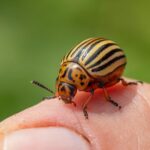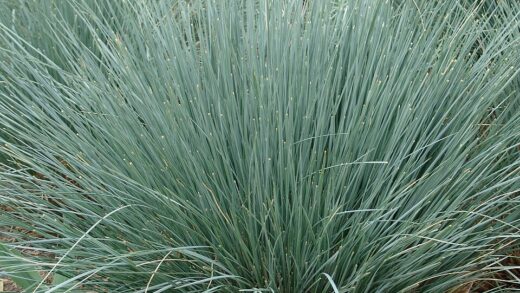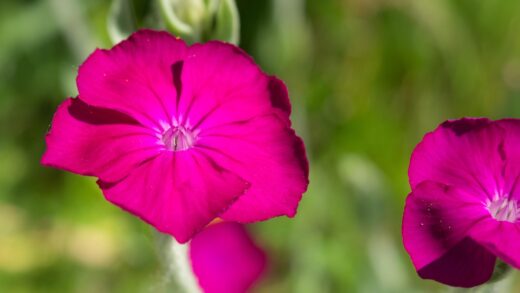A fundamental component of cultivating a lush and thriving Hosta ventricosa is mastering the art of irrigation. This species, with its broad, verdant leaves, has a significant demand for water throughout its active growing season, and consistent moisture is the key to maintaining its health and aesthetic appeal. The foliage of a well-hydrated hosta is firm, glossy, and displays the rich, deep green color for which it is celebrated. Conversely, inadequate moisture quickly manifests in a series of stress signals, including wilting, drooping leaves, and the development of crispy, brown margins, which detract from its ornamental value. Therefore, understanding the specific water requirements of the ovate-leaved hosta and implementing effective irrigation strategies is not merely a routine task but a critical practice for ensuring its vitality.
The water needs of Hosta ventricosa are deeply rooted in its native habitat. Originating from the shaded, moist woodland floors of China, it is genetically programmed to thrive in soil that remains consistently damp but not waterlogged. The goal in a garden setting is to replicate these conditions as closely as possible. The large surface area of the leaves leads to a high rate of transpiration, the process by which plants release water vapor, meaning that on warm, sunny, or windy days, the plant can lose a substantial amount of its internal moisture. This loss must be replenished through regular and deep watering to prevent cellular damage and stress.
Effective irrigation is about more than just the frequency of application; it is also about the method and timing. Watering deeply encourages the development of a more extensive and resilient root system, as the roots are forced to grow deeper into the soil profile to access moisture. This contrasts with shallow, frequent watering, which promotes a shallow root system that is much more vulnerable to drying out during periods of drought. The timing of watering is also important, with morning being the ideal time to allow foliage to dry and minimize the risk of fungal diseases that flourish in damp, stagnant conditions overnight.
Ultimately, a gardener’s ability to observe and respond to the plant’s needs is the most crucial element of successful watering. Factors such as soil composition, local climate, rainfall, and the plant’s specific location within the garden all influence how often it will require irrigation. By learning to read the subtle cues of the plant and to assess the moisture level of the soil, a gardener can provide the precise amount of water needed to support the magnificent display of foliage that makes Hosta ventricosa a true shade garden aristocrat. This proactive and attentive approach to moisture management is foundational to its long-term success.
Understanding the plant’s water needs
The water requirements of Hosta ventricosa are directly linked to its physiological structure and growth cycle. The plant’s expansive, relatively thin leaves are highly efficient at photosynthesis but are also prone to rapid water loss. This makes the plant particularly sensitive to drought conditions. During the peak growing season, from late spring through summer, when the plant is actively producing and supporting its full complement of foliage and flowers, its demand for water is at its highest. During this period, a lack of consistent moisture can stunt growth, reduce the size and number of leaves, and inhibit flowering.
More articles on this topic
The composition of the soil plays a critical role in mediating the plant’s access to water. An ideal soil for hostas is rich in organic matter, which acts like a sponge, absorbing and holding moisture while still allowing excess water to drain away. In heavy clay soils, which can become compacted and waterlogged, the roots may be deprived of oxygen and become susceptible to rot. Conversely, in sandy soils that drain too quickly, moisture is not retained in the root zone for a sufficient period, requiring much more frequent irrigation to compensate. Amending the soil before planting is therefore a crucial step in creating a water-retentive yet well-drained environment.
It is also important to consider the impact of environmental factors on the plant’s water needs. A hosta planted in a location that receives several hours of morning sun will require more water than one planted in deep, constant shade. Similarly, plants exposed to drying winds will transpire more rapidly and deplete their water reserves faster. Competition from the roots of nearby trees and large shrubs can also significantly reduce the amount of available water for the hosta, necessitating supplemental irrigation even in seemingly moist conditions.
As the season progresses into autumn, the plant’s water requirements naturally decrease. As the days shorten and temperatures cool, the rate of growth and transpiration slows down. The plant begins to enter dormancy, and the leaves will naturally start to yellow and die back. During this time, it is important to reduce the frequency of watering. Continuing to irrigate heavily after the plant has entered dormancy can lead to waterlogged soil during the winter, which can promote crown rot and damage the dormant roots, jeopardizing the plant’s survival.
The best watering techniques
The method used to deliver water to Hosta ventricosa can have a significant impact on its health. The most effective technique is to apply water slowly and directly to the soil at the base of the plant, ensuring the entire root zone becomes saturated. This method, often referred to as deep watering, encourages roots to grow deeper into the soil, creating a more robust and drought-tolerant plant. It is far more beneficial to provide one or two deep soakings per week during dry weather than to give the plant a light, superficial sprinkling every day.
More articles on this topic
Soaker hoses and drip irrigation systems are excellent tools for achieving this type of deep, targeted watering. These systems deliver water at a slow, steady rate, allowing it to be absorbed into the soil with minimal runoff or evaporation. They also have the significant advantage of keeping the foliage dry. Wet leaves, particularly for prolonged periods, can create the perfect environment for the development and spread of common fungal diseases like anthracnose and slug activity. By delivering water directly to the soil, these risks are substantially minimized.
If using a handheld hose or watering can, it is important to take the time to water thoroughly. Place the end of the hose near the base of the plant and let the water run slowly for several minutes, moving it around the entire drip line to ensure even distribution. Avoid spraying the water over the top of the plant, as this not only wets the leaves but is also an inefficient method, with much of the water evaporating before it ever reaches the soil. The goal is for the moisture to penetrate at least six to eight inches deep into the soil profile.
The time of day when watering is performed also matters. The best time to water hostas, and most other garden plants, is in the early morning. Watering in the morning ensures that the plant is well-hydrated before the heat of the day begins, reducing the risk of stress and wilting. It also provides any moisture that does splash onto the leaves with ample time to evaporate in the daylight. Watering in the evening, while seemingly a good way to hydrate the plant after a hot day, can be problematic as the foliage may remain wet throughout the night, increasing the likelihood of fungal infections.
Signs of overwatering and underwatering
Learning to recognize the signs of both too much and too little water is a crucial skill for any gardener cultivating Hosta ventricosa. Underwatering is often the more immediately obvious of the two issues. The first symptom is typically a slight wilting or drooping of the leaves, particularly during the warmest part of the day. The leaves may also lose their glossy sheen and appear dull. If the dry conditions persist, the edges and tips of the leaves will begin to turn brown and crispy, a condition known as leaf scorch, and in severe cases, the entire plant may appear stunted and fail to thrive.
Overwatering, while sometimes less apparent at first, is ultimately more dangerous to the health of the plant. The most significant risk of excessive moisture is root rot, a condition where the roots are deprived of oxygen and begin to decay. On the surface, the symptoms of overwatering can paradoxically mimic those of underwatering. The leaves may turn yellow (starting with the lower ones), wilt, and become limp, not because of a lack of water, but because the rotting root system is no longer able to absorb and transport the water that is present.
To distinguish between the two problems, the most reliable method is to physically check the condition of the soil. Insert a finger or a small trowel into the soil a few inches deep, near the base of the plant. If the soil is dry and crumbly, the plant is underwatered and needs a thorough soaking. If the soil is soggy, muddy, or has a sour smell, overwatering is the likely culprit. In cases of overwatering, it is essential to withhold water until the top several inches of soil have had a chance to dry out and to take steps to improve drainage in the long term if the problem is persistent.
Another sign of chronic overwatering can be the appearance of fungus or mold on the soil surface or at the base of the plant. The crown of the hosta may also become soft and mushy, which is a definitive sign of crown rot, a condition that is often fatal. By paying close attention to both the appearance of the plant and the condition of the soil, a gardener can make informed decisions about their irrigation practices, ensuring the plant receives the optimal amount of moisture to support its vigorous and healthy growth.
The role of mulch in moisture retention
Mulching is a simple yet profoundly effective practice that plays a vital role in the moisture management strategy for Hosta ventricosa. Applying a layer of organic material over the soil surface around the plant offers numerous benefits, the most significant of which is the conservation of soil moisture. The mulch acts as a physical barrier, slowing the rate of evaporation from the soil surface caused by sun and wind. This means that the soil remains moist for longer periods after watering or rainfall, reducing the overall frequency of irrigation required.
A wide variety of organic materials can be used for mulching, each with its own advantages. Shredded bark, pine needles, compost, and chopped leaves are all excellent choices. These materials not only conserve moisture but also help to suppress weed growth, which is beneficial as weeds compete with the hosta for available water and nutrients. Furthermore, as the organic mulch gradually decomposes over time, it enriches the soil, improving its structure and adding valuable nutrients that support healthy plant growth. This process mimics the natural layer of leaf litter found in the woodland environments where hostas originate.
The proper application of mulch is important to reap its benefits without causing unintended harm. A layer two to three inches deep is generally ideal. This is thick enough to be effective at retaining moisture and suppressing weeds but not so thick that it prevents water and air from reaching the soil. It is crucial to pull the mulch back slightly from the base of the plant, creating a small, mulch-free circle around the crown. Piling mulch directly against the plant stems can trap excess moisture, which can lead to crown rot and create a welcoming habitat for slugs and other pests.
The mulch layer should be replenished annually, typically in the spring. This is a good time to apply a fresh layer as it will help conserve moisture as temperatures begin to rise and will suppress the germination of spring weeds. By incorporating mulching into the regular care routine, gardeners can create a more stable and favorable root environment for their Hosta ventricosa, leading to healthier, more resilient plants that require less frequent watering and are better able to withstand periods of dry weather.




















